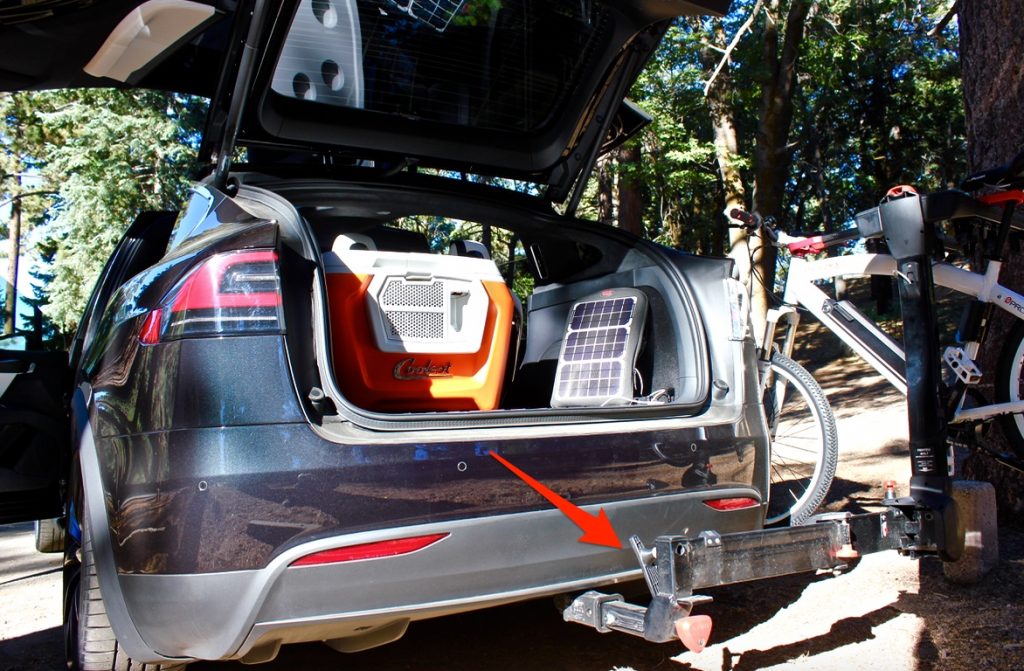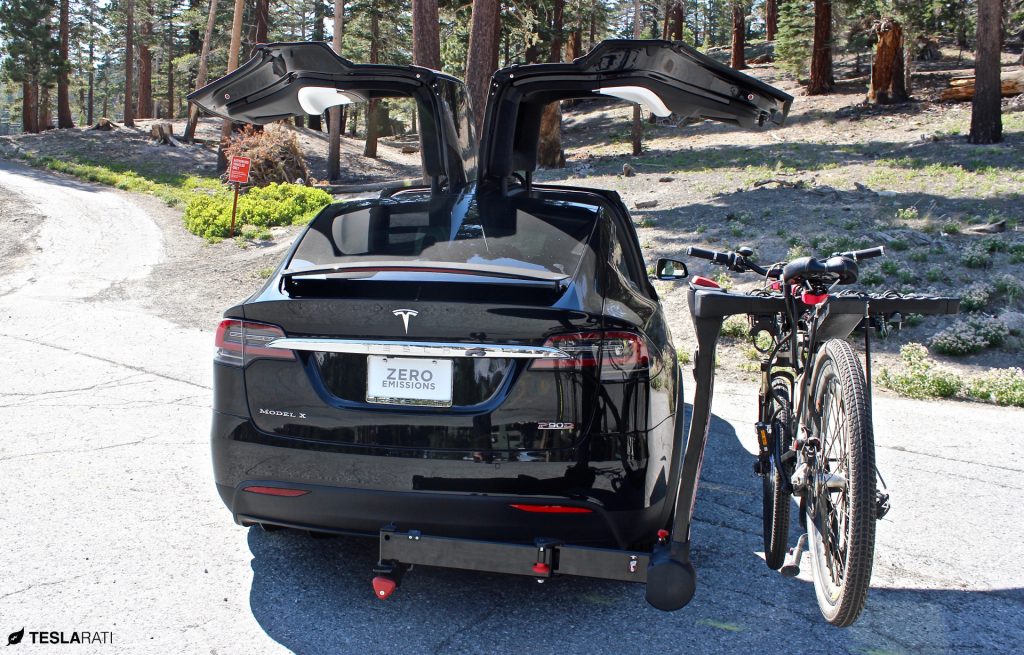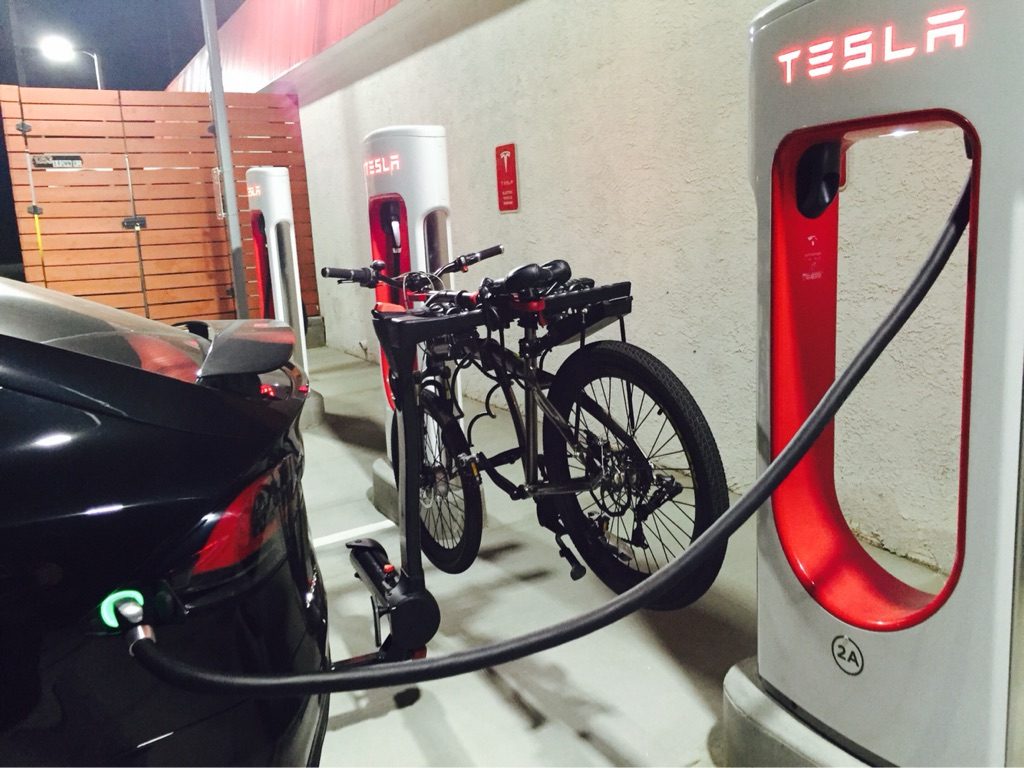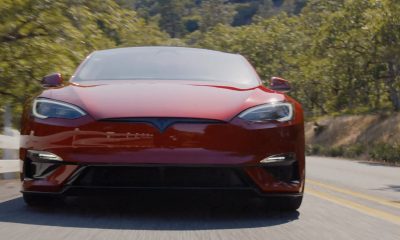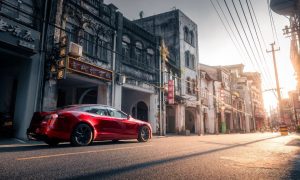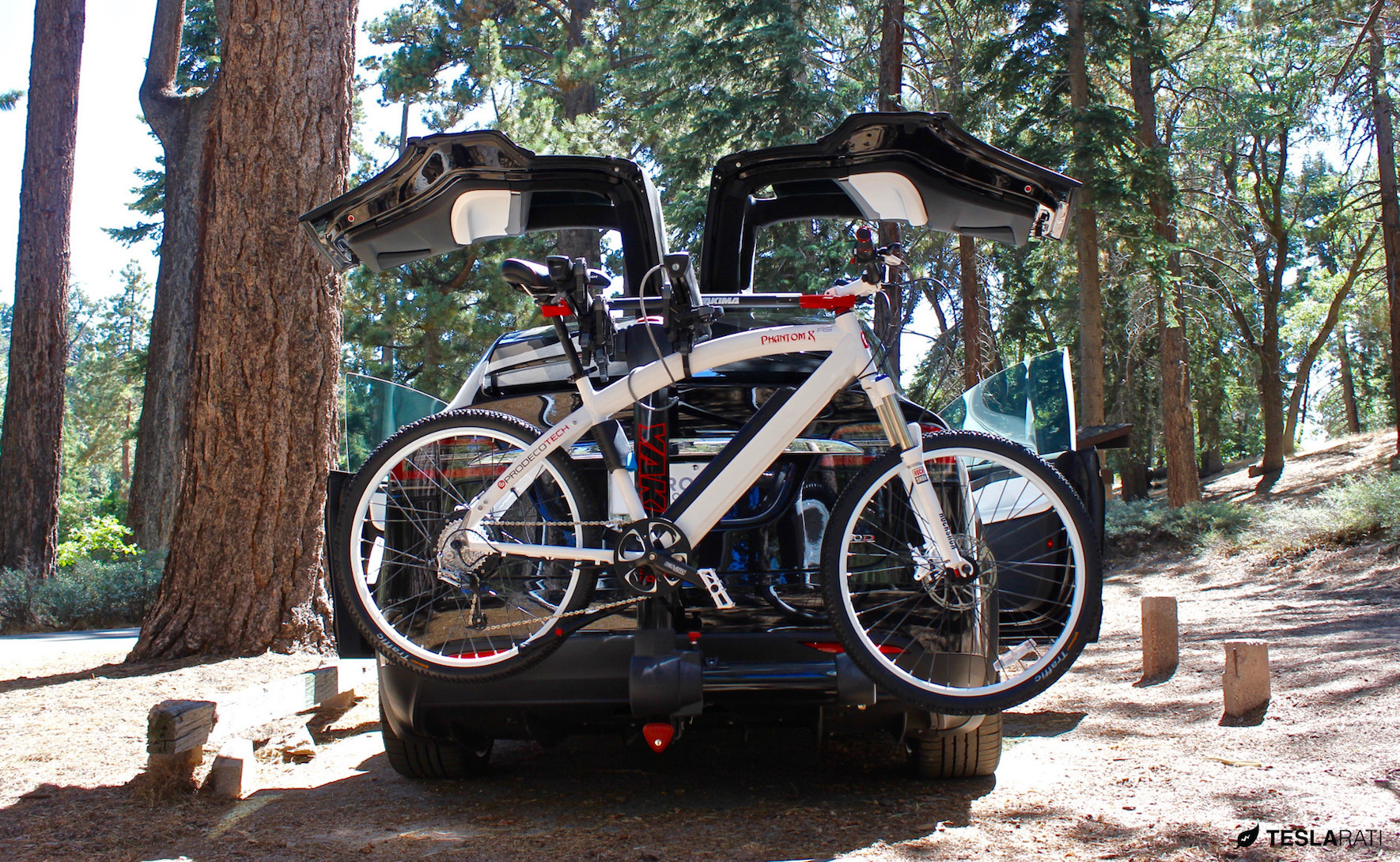

DIY
Installing a Tesla Model X bike rack: once you go FullSwing, you can’t go back
As we prepared for two upcoming Tesla road trips through the windy roads of Big Bear Lake and Mammoth Lakes, both in California, we began our hunt for a Model X bike rack that would help us transport our electric bikes. A quick Google search led us to Tesla’s branded Model X Hitch Rack, sold through their online store, along with a few other popular racks by Yakima and Thule. Both of which were highly rated by consumers on Amazon and outdoor retail chain, REI.
Our search revealed that Tesla’s Model X Hitch Rack was in fact just a Yakima FullTilt Bike Rack except with a $130 mark up due to the Tesla logo. We love Tesla but not enough to justify paying 33% more to have their branding. But one thing we did decide on is to stick with the same manufacturer and select Yakima over Thule. Okay, cool. Let’s get the bike rack. But wait a minute. How does one actually Supercharge with bikes in tow especially if the stall requires one to reverse into?
Flashbacks of the infamous red Model X taking up three Supercharger stalls immediately ran through our minds. Don’t be that guy. Also, with cooler, camping gear and equipment packed into the trunk, and bikes mounted, how does one actually open the rear hatch without having to off load all of the bikes? In short, you can’t. Unless the Model X bike rack was a swing away type.
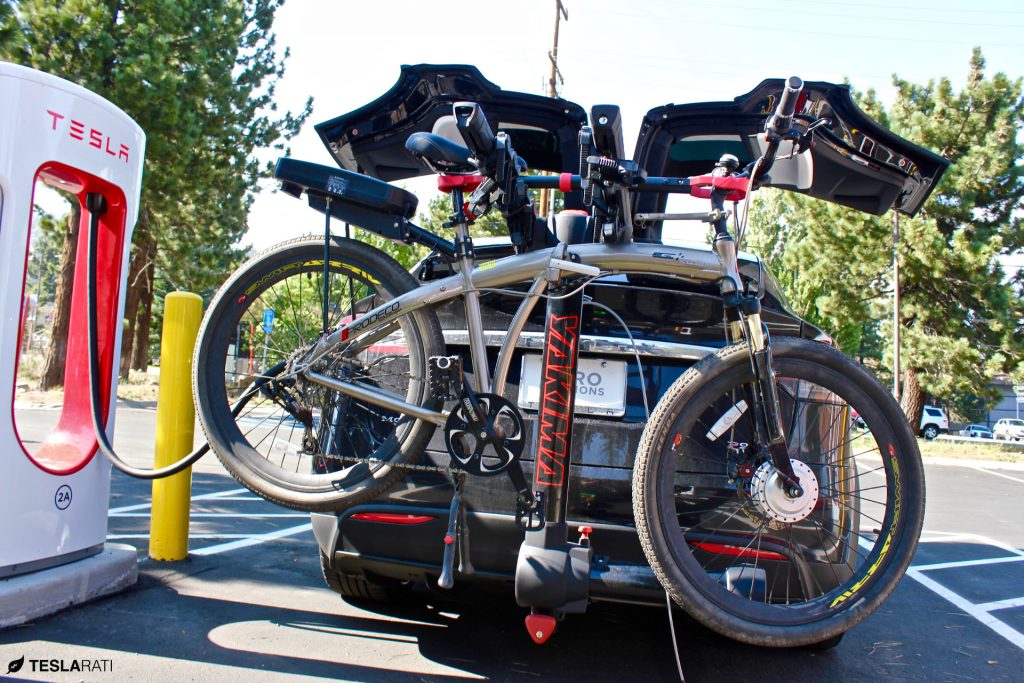
Tesla Model X Supercharging at trailer-friendly Mammoth Lakes, CA
Tesla Model X Yakima FullSwing Bike Rack
Figuring out that we needed a bike rack that would allow us to easily Supercharge but also open the rear hatch, we decided on getting the Yakima FullSwing Bike Hitch Rack which was not only cheaper by nearly $100 under Tesla’s branded Yakima Model X bike rack, had all of the same features – scuff free zip straps, anti-sway cradle, and their SpeedKnob, which we’ll describe later – but also had the added convenience of being a swing away type rack.
Installation
Installing the bike rack was no more difficult than installing anything into a hitch receiver. If your Model X has the tow package and you haven’t installed the hitch receiver yet, you may want to follow our guide on how to install the Tesla Model X hitch receiver first to understand how the assembly works.
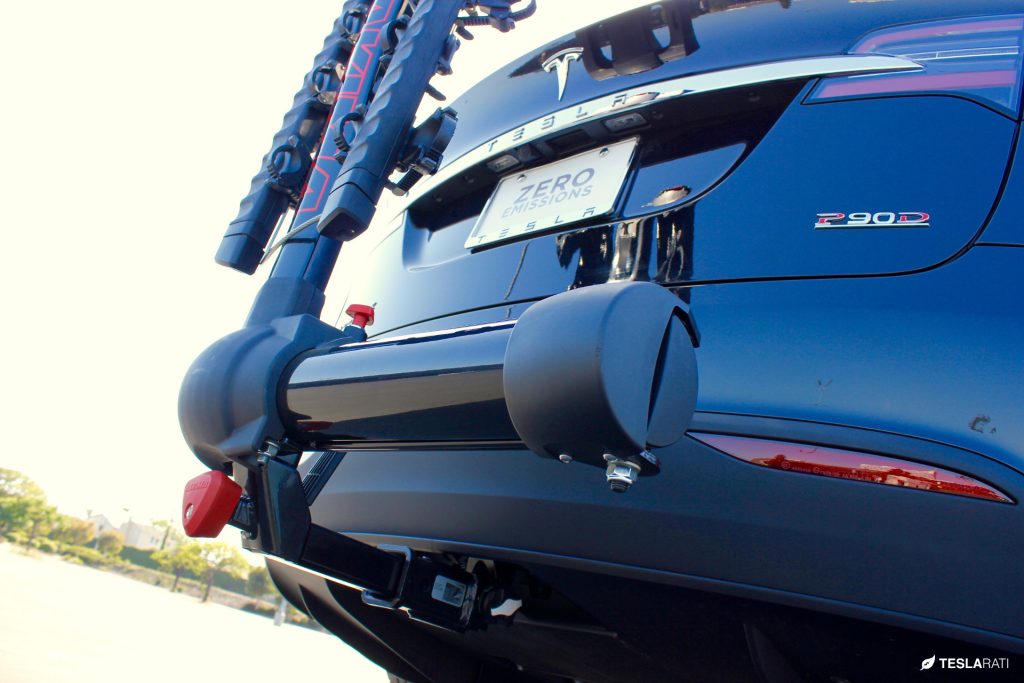
Tesla Model X bike rack using Yakima’s FullSwing assembly.
The FullSwing bike rack slides right into Tesla’s 2″ hitch receiver and then clicks into place. Once in place, use what Yakima refers to as their Tool-Free SpeedKnob to fully secure the rack to the receiver by turning the big red knob clockwise until it’s fairly tight. What this feature does is eliminates any jiggle between the bike rack assembly and the receiver. In essence, it’s a feature that will allow you to enjoy the silence of your Tesla and spare you from losing your mind if you were to hear a persistent rattle, clank and squeak over hundreds, if not thousands, of miles while traveling with bike in tow.
How does it work?
Swinging the bike away from the vehicle can be achieved without using any tools whatsoever and can be done in approximately 30 seconds. The first step is to loosen a large lever behind the main assembly that secures the swing out arm to the rack itself. Loosen it counter clockwise until it is no longer threaded into the assembly. There’s no concern of over-loosening as the lever will dangle without falling off of the assembly.
Once the lever is unsecured, pull the red pin on top to dislodge the swing out arm from the main assembly. At this point, the entire bike rack will swing away from the vehicle. It’s worth noting that there’s two hinges and a red pin that’s used to secure the second outward hinge so that the bikes are perpendicular to the swing out arm. This pin ensures that the rack with bikes will not over-swing and slam into the side of the vehicle. This is especially useful when parking against a slope and the bikes have a natural tendency due to gravity to swing open.
Here are a few additional photos we captured showing the convenience of having a swing away type bike rack: one while on our camping excursion, and the other captured while installing the rear camera from our Model X BlackVue dash cam set.
Supercharging
Ironically, we purchased the bike rack not only for the added convenience of being able to open the rear hatch with bikes in tow, but because of concern over Supercharging. Rather, not being able to back into a Supercharger without coming into contact with the chargers themselves.
It turns out that Supercharger cables are just long enough to allow one to plug-in with bikes in tow and charge without putting too much tension on the cord itself. Though the extended bike rack protrudes from the vehicle, there’s still enough room between the end of the bike rack and the Supercharger to allow for backing in.
Conclusion
If you’re looking for a bike rack for the Tesla Model X or Model S and want the added convenience of being able to retrieve items from the trunk with bikes mounted, then we’d recommend using any swing away type bike rack. We happened to pick the Yakima FullSwing 4 bike carrier simply because Tesla decided to use Yakima for their own branded rack, and we’re glad we did.
The FullSwing rack is not only $100 cheaper than Tesla’s rack but provides more usability. That’s a win-win if you ask us.
(Model S owners that might be interested in installing this same rack, be sure to check out our review of the Model S hitch rack assembly first)
DIY
Tesla Model 3 pickup “Truckla” gets updates and a perfectly wholesome robot charger
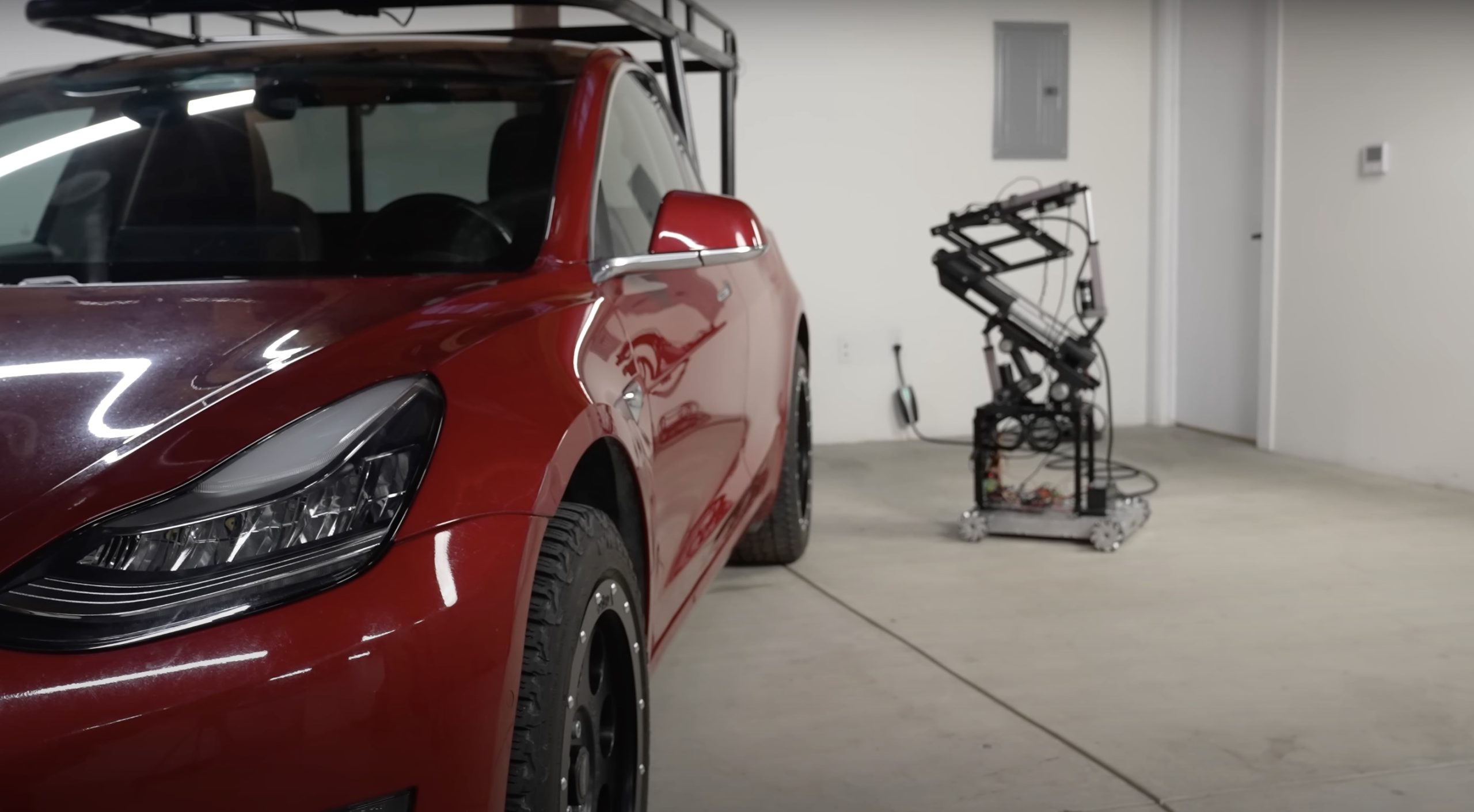
Back in 2019, YouTuber Simone Giertz, the self-proclaimed “Queen of Sh*tty Robots,” created a one-off Tesla Model 3 build that took the automotive world by storm. Fondly dubbed as “Truckla,” Giertz noted that the vehicle was actually her dream car — as crazy as that may sound.
Now almost four years later, the YouTuber posted an update on Truckla. And just like every other big project that one probably started, Giertz stated that she actually stopped working on Truckla when the vehicle was about 80% complete. The car is driving though, but a lot of stuff was not really working very well.
Thus, for her Truckla update, Giertz shared how most of her Model 3 pickup truck conversion was essentially completed. Truckla got a lot of detailing done, she got a slight lift, and she now has a functional tailgate. One has to admit, Truckla’s tailgate is pretty darn cool.
The “Queen of Sh*tty Robots” also opted to give Truckla a friend in the form of an automatic robot charger. Unlike Tesla’s rather interesting snake charger from years past, Truckla’s charger would come in the form of a rover, thanks to her friends at robotics platform Viam. Giertz aptly named Truckla’s robot charger friend “Chargela,” which is an appropriate name for such an invention.
Also true to form for Giertz, Chargela’s first encounter with Truckla was just a tiny bit awkward. One could say that Chargela may have just been a little bit nervous on his first try without human hands helping him. Most importantly, the system did work, so Giertz would likely keep using Chargela for her Model 3 pickup.
Teslas are very tech-heavy vehicles, so projects like Giertz’s Truckla are always remarkable. The fact that the Model 3 works perfectly fine despite having a good chunk of it cut off and turned into a pickup truck bed is mighty impressive any way one looks at it. Overall, Truckla will always be one of the coolest Tesla DIY projects to date, so any updates about the vehicle are always appreciated.
Truckla’s nearly four-year update can be viewed below.
Don’t hesitate to contact us with news tips. Just send a message to simon@teslarati.com to give us a heads up.
DIY
Tesla fan creating ‘CyberRoadster’ using Model 3 Performance parts in epic DIY build
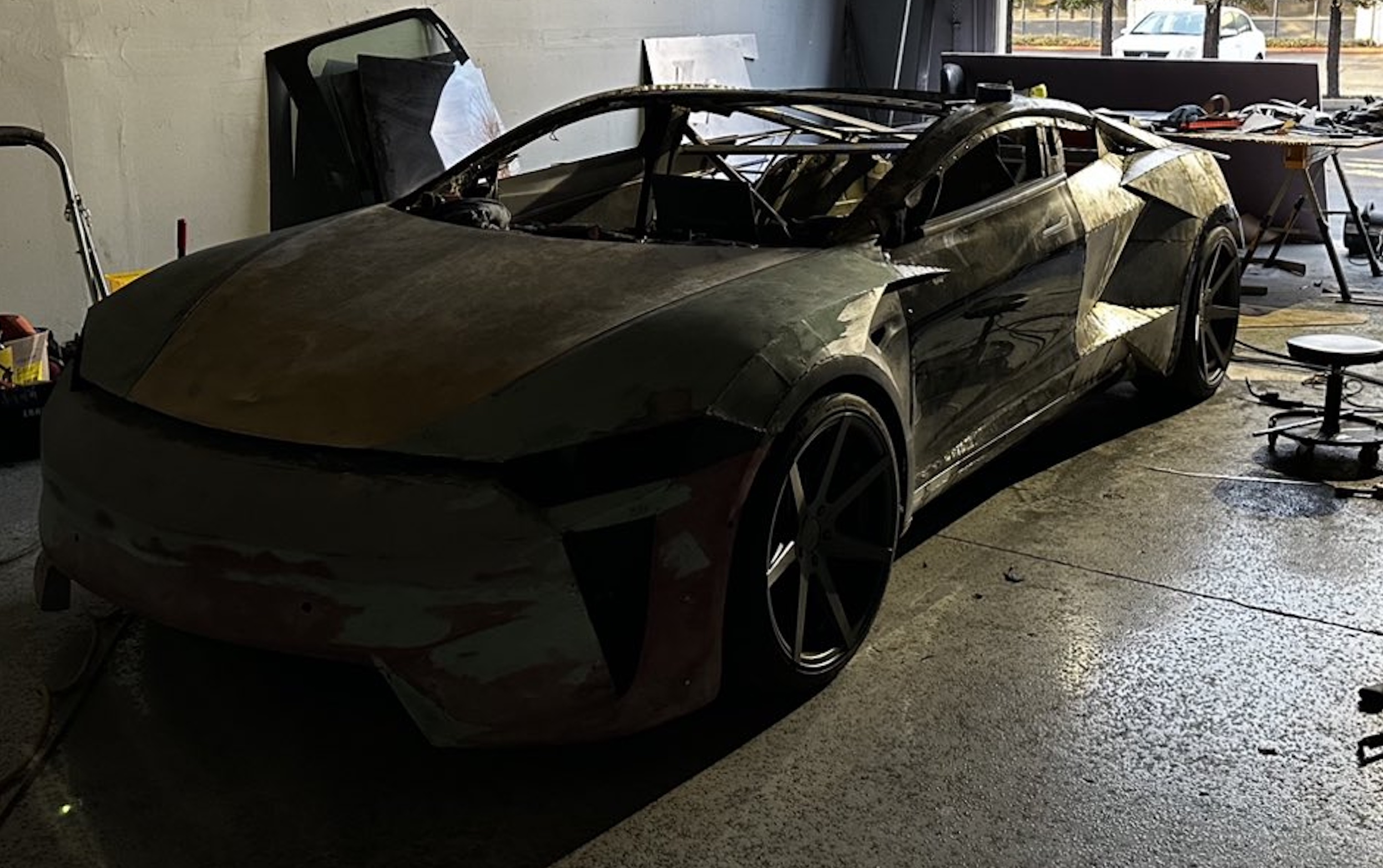
A Tesla owner is taking his hobby and love for electric vehicles to new levels by creating what could only be described as one of the coolest EV-related DIY projects to date. The idea for the project is simple: what happens when you cross a supercar with the Cybertruck? You end up with a two-seater CyberRoadster.
Tesla owner David Andreyev, who goes by the username @Cyber_Hooligan_ on Twitter, has spent the last few months creating a Cybertruck-inspired version of the next-generation Roadster made from a salvaged Model 3 Performance. Starting with a Model 3 Performance is an inspired choice, considering that it is Tesla’s first vehicle that has a dedicated Track Mode.
A look at Andreyev’s YouTube channel, which can be accessed here, shows the meticulous build that the Tesla owner has implemented on the project car. What’s particularly cool about the CyberRoadster is the fact that it’s being built with parts that are also from other Tesla vehicles, like its front bumper that came from a new Model S. Recent videos suggest that the project car’s rear bumper will be from a new Model S as well.
The journey is long for Andreyev, so the completion of the CyberRoadster will likely take some more time. Despite this, seeing the Tesla owner’s DIY journey on such an epic build is more than satisfying. And considering that the CyberRoadster is evidently a labor of love from the Tesla owner, the final results would likely be extremely worth it.
There’s a lot of crazy Tesla modifications that have been done as of late. But some, as it is with a lot of things on the internet these days, have become more silly gimmicks than serious automotive projects. Fortunately, car enthusiasts like Andreyev, who just happen to also love electric vehicles, are taking it upon themselves to create one-of-a-kind EVs that would surely capture the attention of anyone on the road.
Check out the latest video in the CyberRoadster’s creation below.
Don’t hesitate to contact us with news tips. Just send a message to simon@teslarati.com to give us a heads up.
DIY
Tesla owner ‘charges’ Model 3 with homemade solar panel trailer
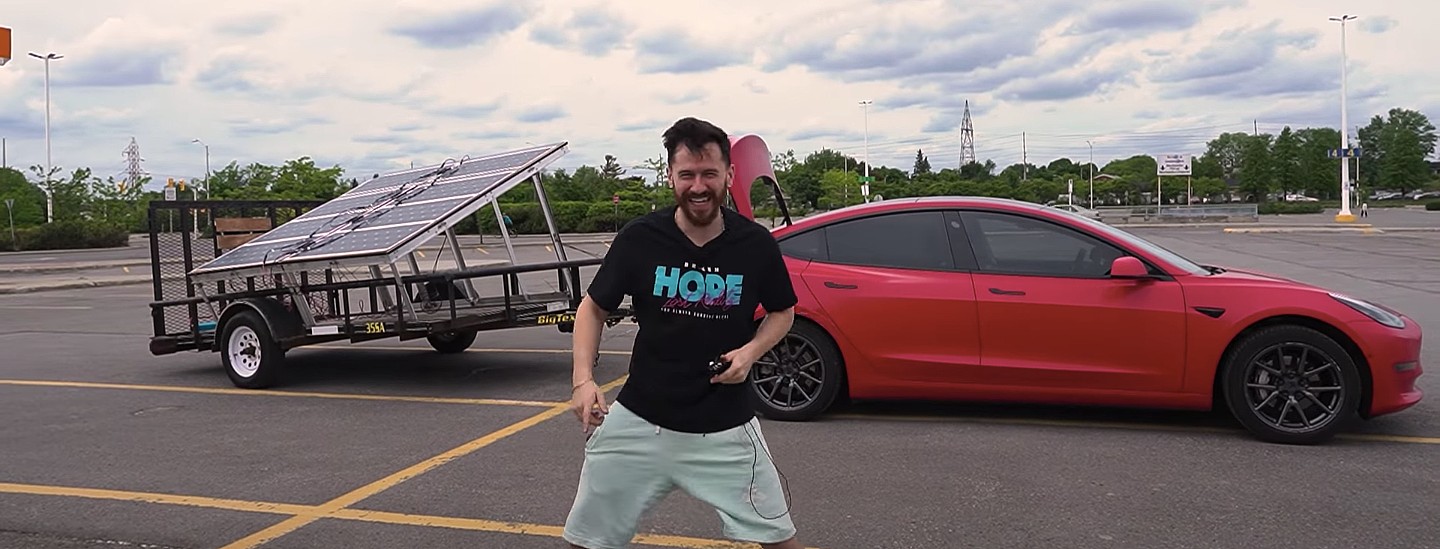
A Tesla owner has demonstrated a rather novel way to charge his Model 3. In a recent video, Sean Callaghan of the ItsYeBoi YouTube channel opted to use a series of off-the-shelf solar panel sheets onto a towable trailer to create a mobile charging unit for his all-electric sedan.
Callaghan planned to use only the sun and the solar sheets purchased from e-commerce platform Wish to charge his Model 3. The solar panel sheets would collect energy from the sun and transfer it to a control panel. The control panels were connected to batteries that would hold the energy—the batteries connected to an inverter, which would then charge the Tesla Model 3.
The entire assembly would provide the Model 3 with about 800 watts of energy on a completely sunny day. However, Callaghan shot the video when weather was overcast, so the entire solar panel trailer build only managed to provide around 300 watts throughout the YouTube host’s test.
To put this into perspective, a 100 volt home wall outlet provides 1.4 kilowatts of power, or 1,400 watts. Therefore, the 300-watt solar panel assembly built by Callaghan was producing less than 25% of the energy of a typical wall outlet. This is pretty marginal compared to Tesla’s 250-kilowatt V3 Superchargers, which provides 250,000 watts, or about 833 times as much power as the makeshift solar panel build.
However, Callaghan’s goal was not to charge the vehicle quickly. He explained the idea came from a previous video where he used a $5,000 Wish-purchased wind turbine to charge his Model 3. He wanted to test the effectiveness and efficiency of the system, which was questionable due to the time it would take to charge the battery fully.
The Model 3 battery pack is 78 kWh, and with Callaghan’s 300-watt system charging his electric vehicle, it would take 260 hours to supply the Tesla’s battery to full capacity.
In the past, electric vehicle enthusiasts have asked Tesla CEO Elon Musk why the company’s vehicles do not contain solar glass roofing, which would charge the car while the owner is driving. Musk has explained that the efficiency of this idea is challenging and likely would not provide an ample amount of range.
When asked about the idea of putting solar panels on the top of Tesla’s vehicles in 2017, Musk responded that the idea was “Not that helpful, because the actual surface of the car is not that much, and cars are often inside. The least efficient place to put solar is on the car.” It also would not be cost-effective for Tesla because “the cost of the panels and electronics, R&D and assembly would never pay for itself in the life of the vehicle, compared to charging from the wall in your garage,” Quartz noted.
That being said, Tesla plans to implement solar panels onto the motorized tonneau of the upcoming Cybertruck. The idea was discussed on Twitter when Musk stated that the optional feature would add “15 miles per day, possibly more” when parked in the sunlight. Also, fold-out solar wings could help capture enough solar energy for 30 to 40 miles a day.
Watch Sean Callaghan’s video of his makeshift solar panel trailer below.
-

 Elon Musk2 weeks ago
Elon Musk2 weeks agoTesla investors will be shocked by Jim Cramer’s latest assessment
-

 News3 days ago
News3 days agoTesla debuts hands-free Grok AI with update 2025.26: What you need to know
-

 Elon Musk1 week ago
Elon Musk1 week agoElon Musk confirms Grok 4 launch on July 9 with livestream event
-

 Elon Musk5 days ago
Elon Musk5 days agoxAI launches Grok 4 with new $300/month SuperGrok Heavy subscription
-

 News2 weeks ago
News2 weeks agoTesla Model 3 ranks as the safest new car in Europe for 2025, per Euro NCAP tests
-

 Elon Musk2 weeks ago
Elon Musk2 weeks agoxAI’s Memphis data center receives air permit despite community criticism
-

 News5 days ago
News5 days agoTesla begins Robotaxi certification push in Arizona: report
-

 Elon Musk2 weeks ago
Elon Musk2 weeks agoTesla scrambles after Musk sidekick exit, CEO takes over sales

